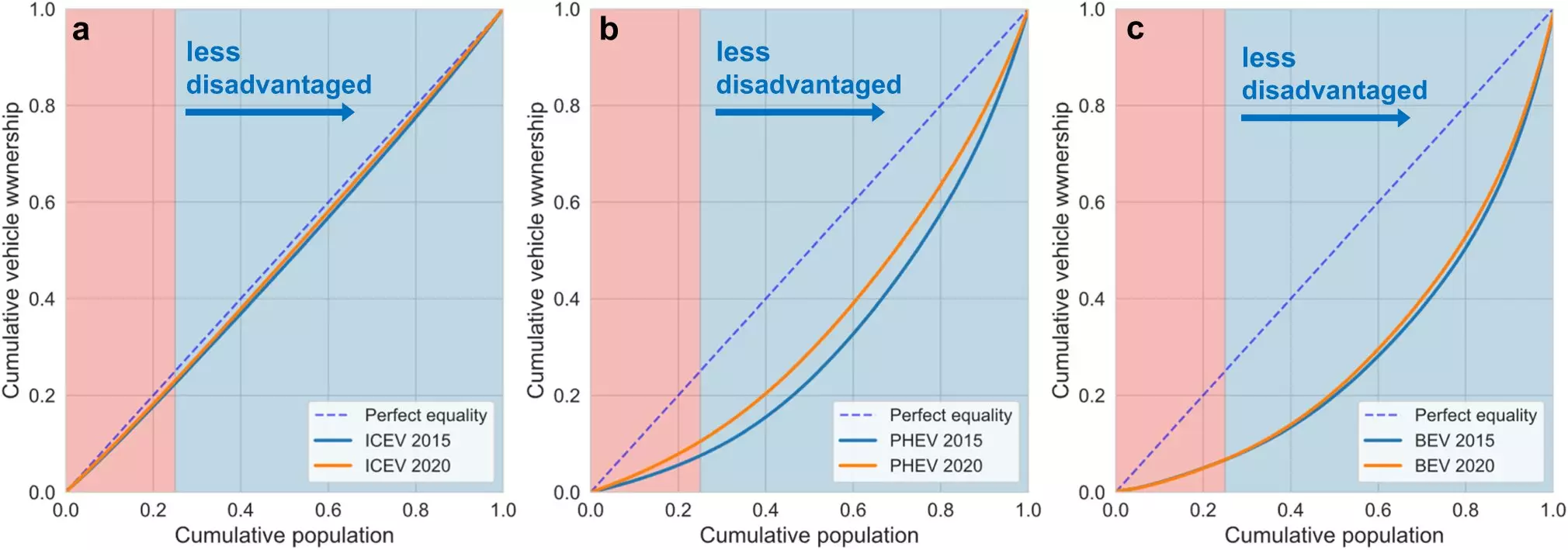Electric vehicle ownership is more prevalent in wealthier neighborhoods compared to disadvantaged ones, according to a study conducted by UCLA. However, the research reveals that electric vehicles significantly improve air quality in all communities, regardless of their socio-economic status. Despite this positive finding, the study also highlights the ongoing pollution from gas-powered vehicles in traffic corridors that pass through disadvantaged areas. While EV travel leads to a 40% reduction in pollution in these communities, it only has a significant impact due to the already high pollution levels. The study emphasizes the importance of addressing the unequal distribution of clean air and recommends policy measures to promote EV adoption and tackle pollution in disadvantaged communities.
Although EVs contribute to cleaner air by reducing tailpipe emissions, there is still a considerable gap in ensuring equitable access to clean air. Low-income neighborhoods continue to experience higher levels of pollution compared to other communities due to the higher volume of vehicle trips in their vicinity. To bridge this gap, the study proposes increasing financial incentives for lower-income households to purchase zero-emission and electric vehicles, including battery-electric, plug-in hybrid, and hydrogen fuel-cell vehicles. Additionally, the researchers call for regulations that require medium- and heavy-duty vehicles, such as shipping and delivery trucks, to transition to zero-emission technologies. Since larger vehicles emit more pollution than smaller ones, this change would significantly contribute to reducing pollution levels in disadvantaged communities.
Expanding Electric Vehicle Adoption
The study emphasizes the need for comprehensive efforts to promote EV adoption across different communities. It highlights the disparity in EV ownership based on income and racial demographics. Nonwhite populations and disadvantaged neighborhoods have lower EV ownership rates compared to wealthier, predominantly white communities. The research indicates that as of 2020, while about 45% of L.A. County residents lived in disadvantaged communities, they only owned 18% of the county’s EVs. To address this imbalance, the researchers aim to understand the barriers hindering EV adoption in disadvantaged communities and actively involve community-based organizations in the decision-making process. By engaging these organizations, the researchers can gather first-hand insights and develop policies tailored to address their specific needs.
A Comprehensive Mobility Simulation
The study employed a unique mobility simulation to project the impact of EV adoption on air quality and equity in Los Angeles County by 2035, when the state of California mandates all new passenger vehicles to be zero-emission. This simulation incorporated various factors such as census data, housing types, commuting patterns, local traffic models, and survey data on vehicle use and charging habits. By creating this model, the researchers gained valuable insights into future policy changes and their effects on residents. The simulation also helped identify optimal locations for charging stations, providing evidence-based guidance for policymakers to make equity-informed decisions.
To ensure the involvement of disadvantaged communities in finding solutions, the researchers have actively collaborated with community-based organizations. By working closely with these organizations, the researchers gain a deeper understanding of the barriers faced by these communities beyond financial constraints. The ongoing EV studies include feedback and input from community-based organizations to develop policies that address their specific challenges and requirements. By empowering these organizations and leveraging their first-hand experiences, the researchers can design tailored interventions that effectively promote EV adoption and reduce pollution in disadvantaged areas.
The UCLA study highlights the potential of electric vehicles in improving air quality across communities, albeit with notable disparities. While EVs offer substantial pollution reduction benefits, disadvantaged neighborhoods face higher pollution levels due to the large volume of gas-powered vehicles in their vicinity. To achieve equitable access to clean air, the study stresses the importance of incentivizing EV adoption in lower-income households, transitioning medium- and heavy-duty vehicles to zero-emission technologies, and actively involving community-based organizations in policy discussions. By bridging these gaps and promoting EV adoption in all communities, we can move towards cleaner and healthier environments for everyone.



Leave a Reply